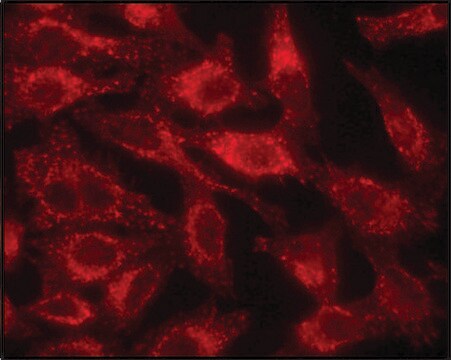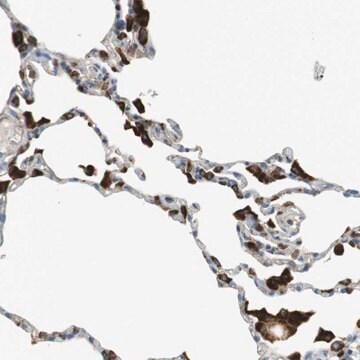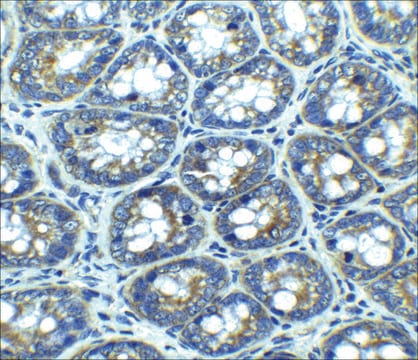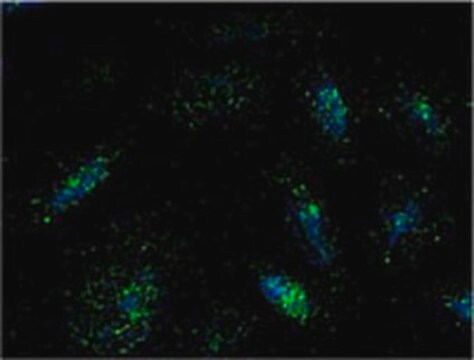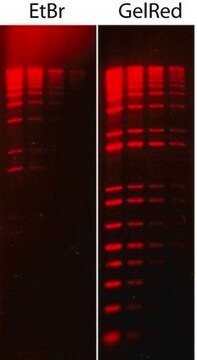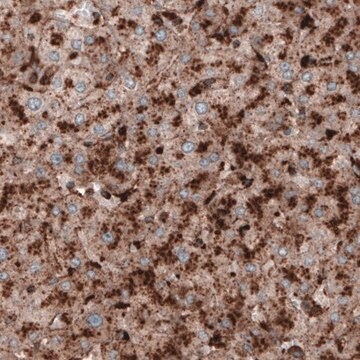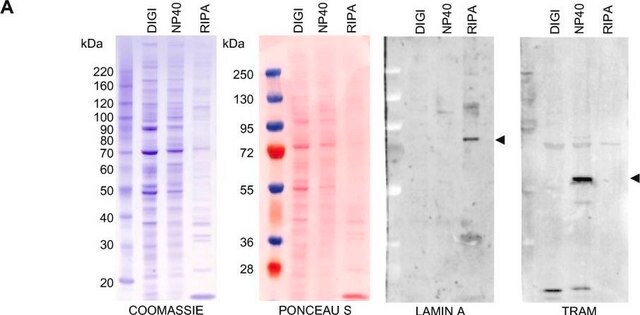MABC1108
Anti-LAMP-1 Antibody, clone H4A3
clone H4A3, from mouse
Synonyme(s) :
Lysosome-associated membrane glycoprotein 1, Lysosome-associated membrane protein 1, CD107 antigen-like family member A, CD107a
About This Item
Produits recommandés
Source biologique
mouse
Forme d'anticorps
purified immunoglobulin
Type de produit anticorps
primary antibodies
Clone
H4A3, monoclonal
Espèces réactives
human
Conditionnement
antibody small pack of 25 μg
Technique(s)
dot blot: suitable
immunofluorescence: suitable
immunohistochemistry: suitable (paraffin)
immunoprecipitation (IP): suitable
western blot: suitable
Isotype
IgGκ
Numéro d'accès NCBI
Numéro d'accès UniProt
Modification post-traductionnelle de la cible
unmodified
Informations sur le gène
human ... LAMP1(3916)
Description générale
Spécificité
Immunogène
Application
Immunohistochemistry (Paraffin) Analysis: A representative lot detected LAMP-1 in Immunohistochemistry applications (Furuta, K., et. al. (2001). Am J Pathol. 159(2):449-55).
Western Blotting Analysis: A representative lot detected LAMP-1 in Western Blotting applications (Mane, S.M., et. al. (1989). Arch Biochem Biophys. 268(1):360-78).
Immunofluorescence Analysis: A representative lot detected LAMP-1 in Immunofluorescence applications (Starr, T., et. al. (2011). Cell Host Microbe. 11(1):33-45).
Dot Blot Analysis: A representative lot detected LAMP-1 in Dot Blot applications (Arruda, L.B., et. al. (2006). J Immunol. 177(4):2265-75).
Immunohistochemistry (Paraffin) Analysis: A 1:250 dilution from a representative lot detected LAMP-1 in human kidney and human pancreas tissue sections.
Immunoprecipitation Analysis: A representative lot immunoprecipitated LAMP-1 in Immunoprecipitation applications (Mane, S.M., et. al. (1989). Arch Biochem Biophys. 268(1):360-78).
Cell Structure
Qualité
Western Blotting Analysis: 1 µg/mL of this antibody detected LAMP-1 in HEK293 cell lysate.
Description de la cible
Forme physique
Stockage et stabilité
Autres remarques
Clause de non-responsabilité
Vous ne trouvez pas le bon produit ?
Essayez notre Outil de sélection de produits.
Certificats d'analyse (COA)
Recherchez un Certificats d'analyse (COA) en saisissant le numéro de lot du produit. Les numéros de lot figurent sur l'étiquette du produit après les mots "Lot" ou "Batch".
Déjà en possession de ce produit ?
Retrouvez la documentation relative aux produits que vous avez récemment achetés dans la Bibliothèque de documents.
Notre équipe de scientifiques dispose d'une expérience dans tous les secteurs de la recherche, notamment en sciences de la vie, science des matériaux, synthèse chimique, chromatographie, analyse et dans de nombreux autres domaines..
Contacter notre Service technique